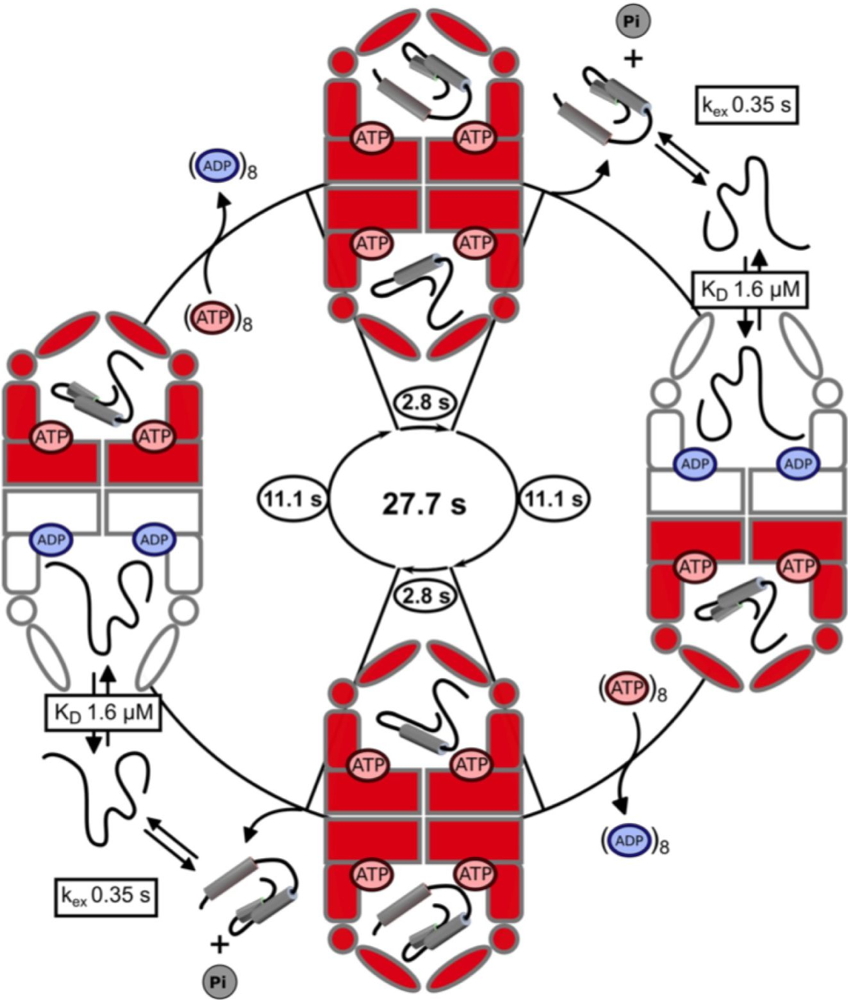Many fundamental cellular functions are performed by large protein assemblies. This applies in particular to protein quality control, the process by which cells ensure the recycling or correct folding of their main constituents, in order to avoid the accumulation of poorly folded proteins, aggregates or fibrils. These large machineries - chaperones, proteases and peptidases - are complex and dynamic. The studies of such biological machines present a significant challenge, due to the very size of these particles, the complexity of their biological substrates and the structural rearrangements involved.
IBS researchers have implemented an approach that combines site-specific nuclear magnetic resonance observation of very large proteins, enabled by advanced isotope labeling methods, with an
in situ ATP regeneration system. Using this method, they provide functional insight into the 1-MDa large hsp60 chaperonin while processing client proteins. The results, published in
Sciences Advances on September 19, 2018, reveal how the functional cycle of this complex assembly is regulated. This approach opens up new perspectives for directly studying the structures and mechanisms of various biological machines in action.
